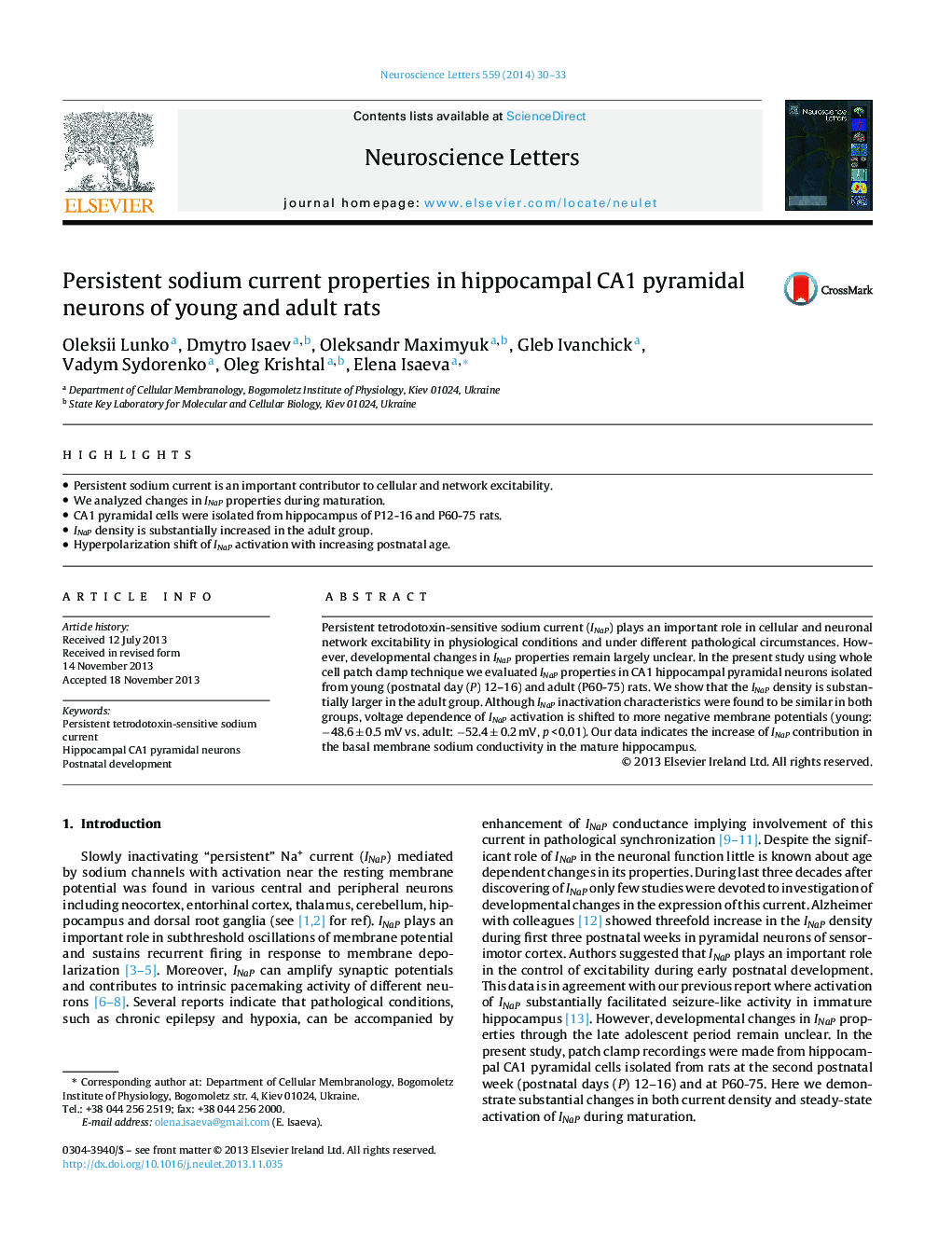| Article ID | Journal | Published Year | Pages | File Type |
|---|---|---|---|---|
| 6282354 | Neuroscience Letters | 2014 | 4 Pages |
Abstract
Persistent tetrodotoxin-sensitive sodium current (INaP) plays an important role in cellular and neuronal network excitability in physiological conditions and under different pathological circumstances. However, developmental changes in INaP properties remain largely unclear. In the present study using whole cell patch clamp technique we evaluated INaP properties in CA1 hippocampal pyramidal neurons isolated from young (postnatal day (P) 12-16) and adult (P60-75) rats. We show that the INaP density is substantially larger in the adult group. Although INaP inactivation characteristics were found to be similar in both groups, voltage dependence of INaP activation is shifted to more negative membrane potentials (young: â48.6 ± 0.5 mV vs. adult: â52.4 ± 0.2 mV, p < 0.01). Our data indicates the increase of INaP contribution in the basal membrane sodium conductivity in the mature hippocampus.
Related Topics
Life Sciences
Neuroscience
Neuroscience (General)
Authors
Oleksii Lunko, Dmytro Isaev, Oleksandr Maximyuk, Gleb Ivanchick, Vadym Sydorenko, Oleg Krishtal, Elena Isaeva,
